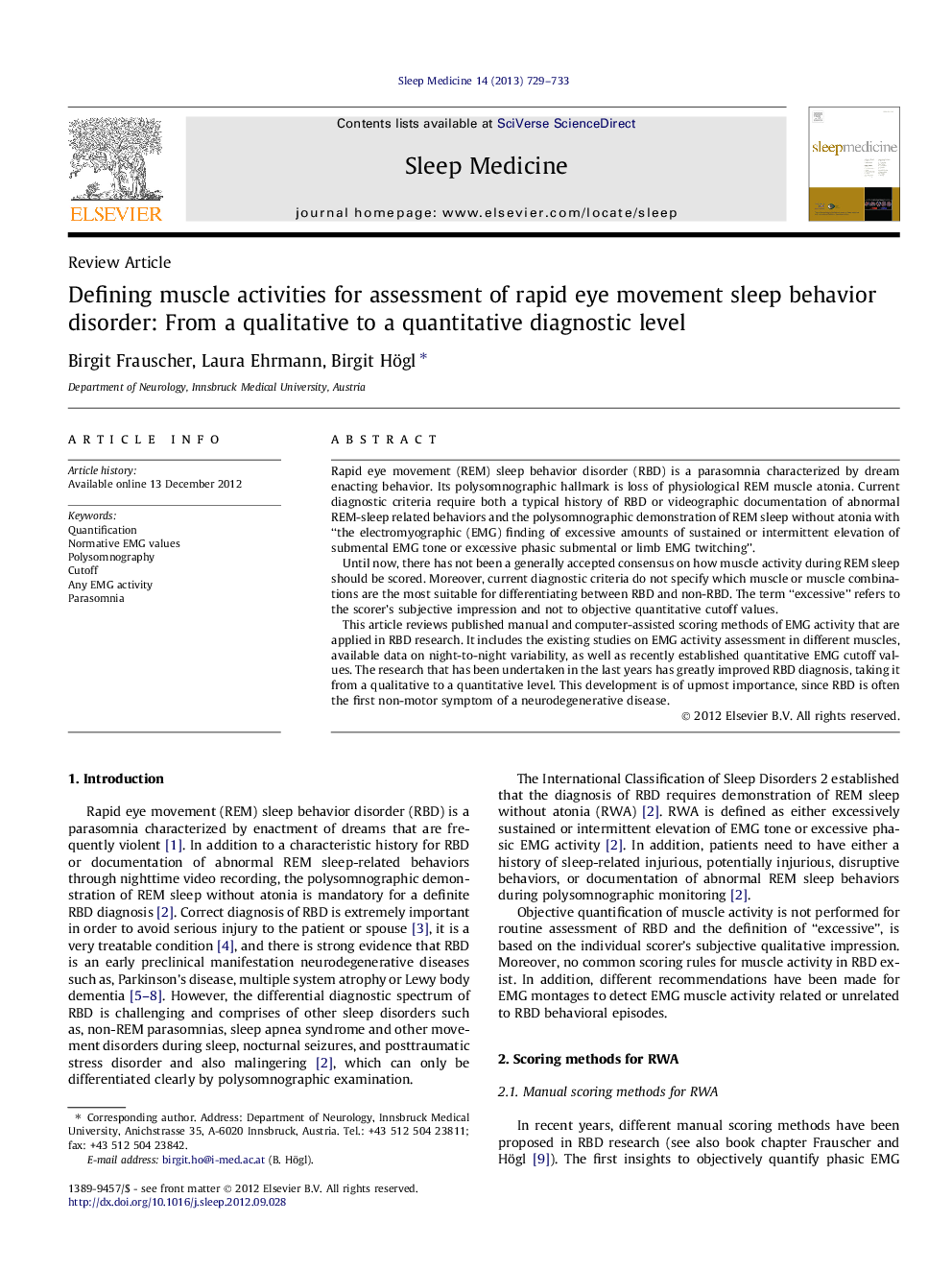| Article ID | Journal | Published Year | Pages | File Type |
|---|---|---|---|---|
| 3176266 | Sleep Medicine | 2013 | 5 Pages |
Rapid eye movement (REM) sleep behavior disorder (RBD) is a parasomnia characterized by dream enacting behavior. Its polysomnographic hallmark is loss of physiological REM muscle atonia. Current diagnostic criteria require both a typical history of RBD or videographic documentation of abnormal REM-sleep related behaviors and the polysomnographic demonstration of REM sleep without atonia with “the electromyographic (EMG) finding of excessive amounts of sustained or intermittent elevation of submental EMG tone or excessive phasic submental or limb EMG twitching”.Until now, there has not been a generally accepted consensus on how muscle activity during REM sleep should be scored. Moreover, current diagnostic criteria do not specify which muscle or muscle combinations are the most suitable for differentiating between RBD and non-RBD. The term “excessive” refers to the scorer’s subjective impression and not to objective quantitative cutoff values.This article reviews published manual and computer-assisted scoring methods of EMG activity that are applied in RBD research. It includes the existing studies on EMG activity assessment in different muscles, available data on night-to-night variability, as well as recently established quantitative EMG cutoff values. The research that has been undertaken in the last years has greatly improved RBD diagnosis, taking it from a qualitative to a quantitative level. This development is of upmost importance, since RBD is often the first non-motor symptom of a neurodegenerative disease.
